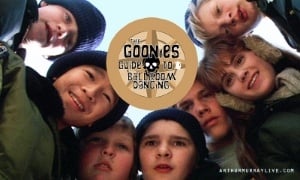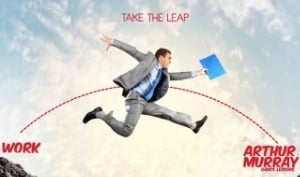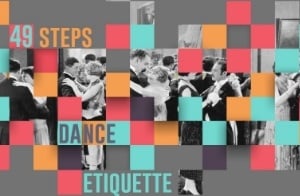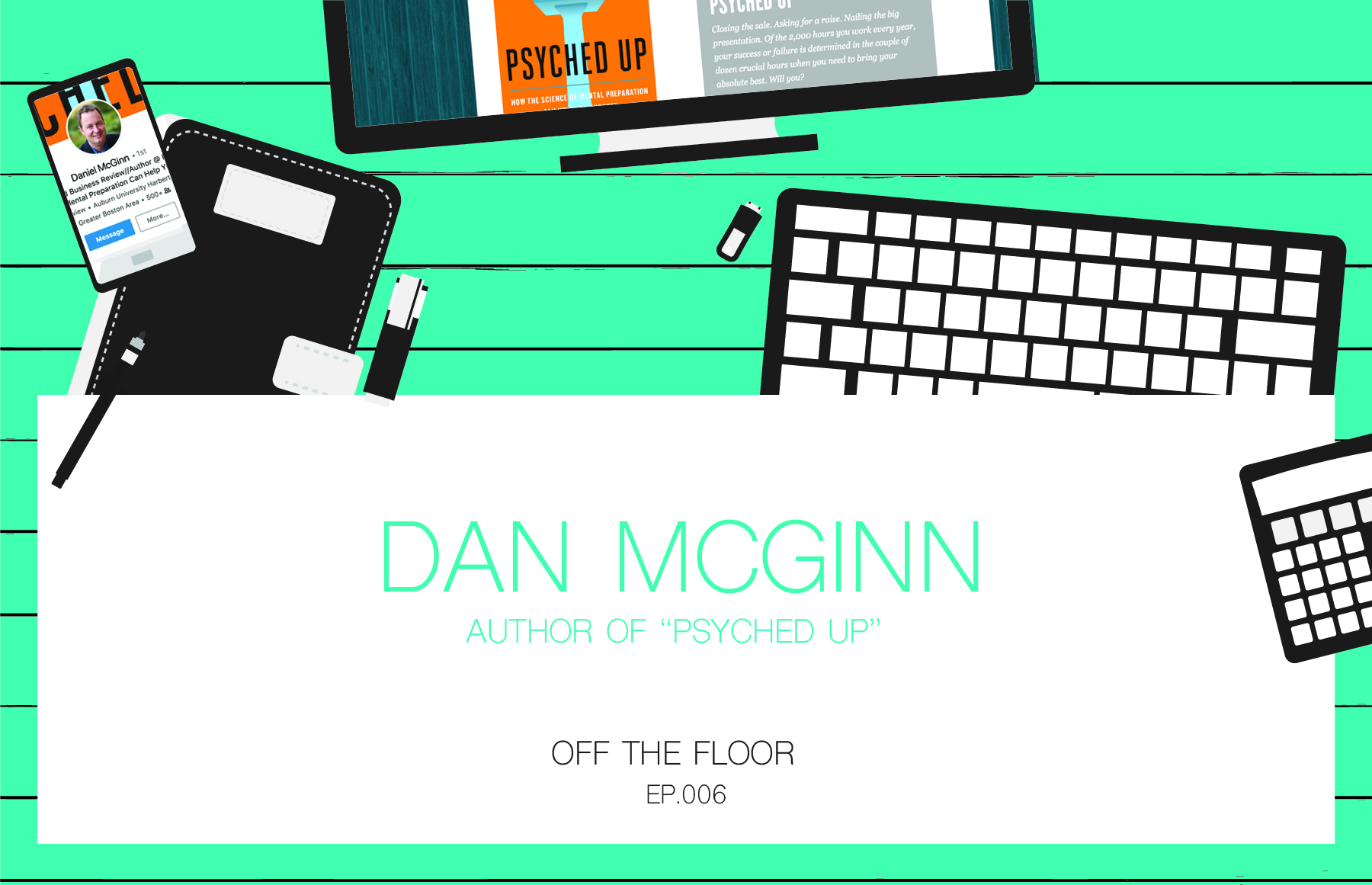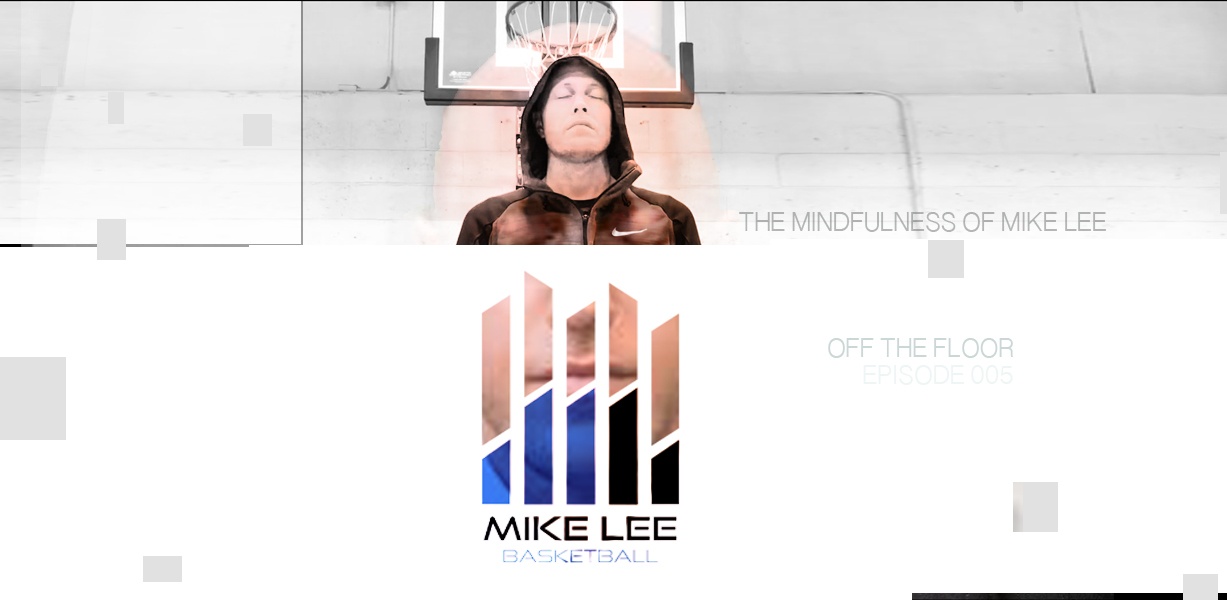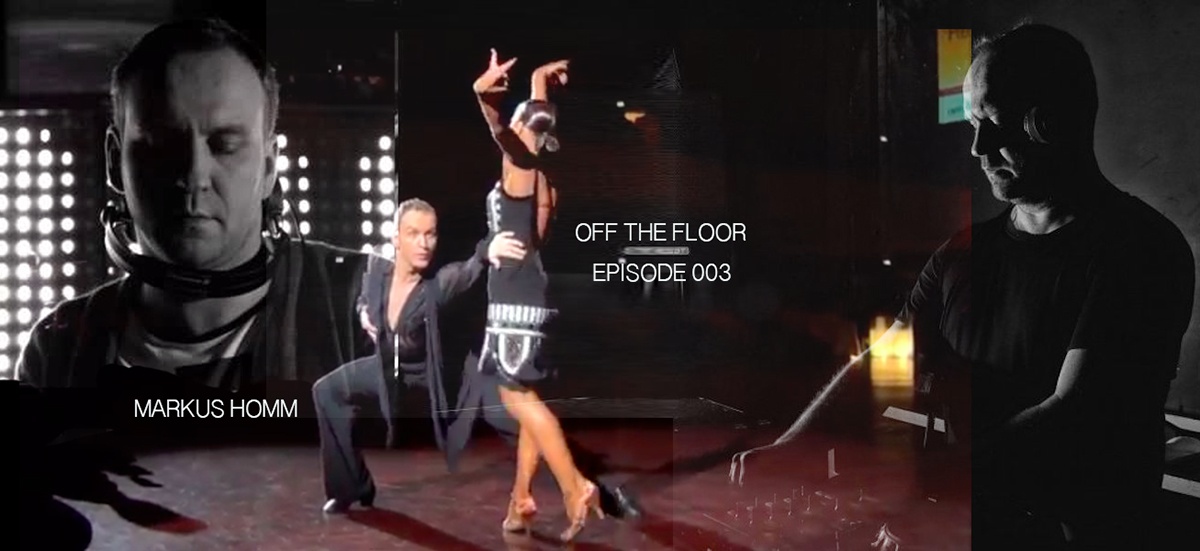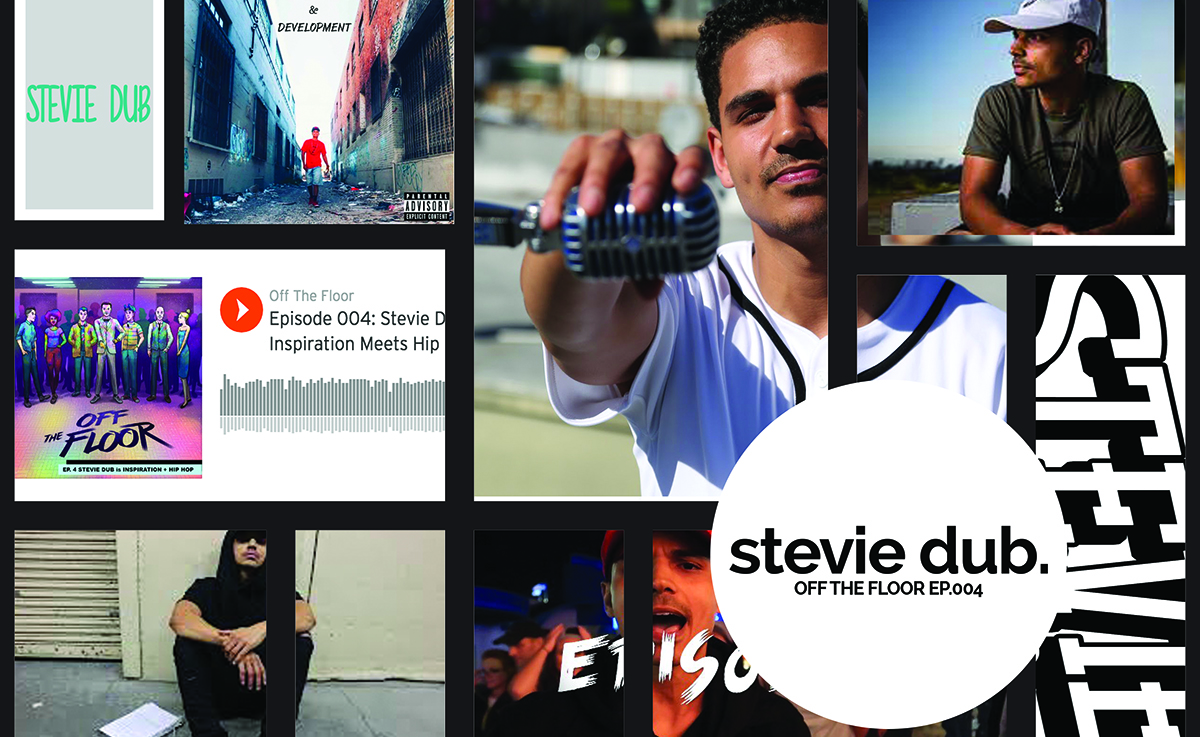 Off the Floor 007: Caitlyn Woods, Hooper of Joy
Off the Floor 007: Caitlyn Woods, Hooper of Joy
There probably aren't many degrees of separation between the world of ballroom dancing and learning to hula-hoop.
In both cases, students arrive uncertain, apprehensive, and most will probably second guess the decision as they arrive for their appointment.
Yet, on the other end of that dynamic, is a teacher and there are many things Caitlyn Woods has experienced, from the good, to the challenging, that reflect what your dance teacher has felt.
Woods is a credit to all the teachers out there. This Sydney Australia based "hooper" has found joy through hooping, and it radiates to her students, and through the audio file of this interview.
What is the "Off the Floor" Podcast?
There are so many life lessons that come to light through ballroom dancing. After all, you can compare anything to it and it will probably work. Off the Floor aims to connect the challenges, success, struggles, and learning experiences from people outside the world of dancing to your dancing hobby.

 Off The Floor Episode 007: Chris Lynam interviews Caitlyn Woods
Off The Floor Episode 007: Chris Lynam interviews Caitlyn Woods
CL: I always thought ballroom dancing was so niche and hard to describe, but I can't imagine having to explain to somebody the line of work that you're in. So why don't you just tell everyone a little bit about what you're doing, and how it all got started.
CW: Yeah, it's a bit tricky for me to explain as well. I am a professional hula hooper, [laughs] that's how I classify it, and I blend circus-style hula hoop tricks with freestyle dancing. To make this my full-time job I have a mix of teaching adults how to hula hoop dance, like dance classes that you do in the evenings. I teach kids in schools in their vacation care and after-school care programs, and I have an online shop where I sell adult dance hoops. I also perform. I do corporate performance, roving entertainment, parties, festivals, music events and things. It's a bit of a mix.
CL: Wow, that's wonderful. What were you doing and what was the point where it went from hobby to career?
CW: Okay, so, I've only been hula hooping for about four and a half years now. It was one of those things that I saw on YouTube, and I was like, "That's awesome. I need to learn how to hula hoop." I went and got my first dance hoop, started teaching myself in my backyard off YouTube, and it was only about 6 months before I decided to quit my job and do this full time. I pretty much just jumped straight into it. I was working in an office and then I was like, "Huh, getting busy." I had to turn down some jobs during the daytime and I was like, "Well, it's busy enough to actually just do this full time."
CL: Good for you. Had you had like any kind of dance background, like any formal training, or was it just going to nightclubs? How would you describe that?
CW: No, I haven't had any formal dance training. I did the usual year of jazz and ballet when I was seven years old, and I did some salsa dancing for about a year when I was in my early twenties or something, but no dance background. I've always just kind of enjoyed club dancing and grooving. I just figured it out as I went along I guess.
CL: Did you have to convince anybody in your life? We always have these situations when we have new staff that we hire where they have to these tricky conversations, with their family especially, to tell them, "Hey, I'm gonna pursue this job. It's kind of off the beaten path, but I love it." Did you have to have to that kind of conversation or explain it to anybody rationalizing why you were gonna make this leap into HulaHoopLand?
CW: No, funnily enough, my family and friends are incredibly supportive, and it all happened so organically that they could kind of see it unfolding, and they understood exactly what was happening. It was more of myself that I needed to convince and rationalize what I was doing with myself. Still to this day I'm like, "What am I doing with my life? I'm a professional hula hooper."
CL: With anyone who pursues something creative, it's always going to be this mix of cheerleaders and really hardcore pessimists. It sounds like a really great group behind you.
If you think back to when you were a kid, could you imagine yourself doing this? Did you have an idea of what you thought you'd be doing?
CW: It definitely never occurred to me that I would be hula hooping. I couldn't hula hoop as a child, so it was a skill I specifically learned as an adult. I kind of never really had an idea of what I wanted to do when I grew up. I kind of thought the usual stuff: the big dreams kids have of working with dolphins, being a marine biologist, all of those big things. I just jumped around my career path so much it just sort of unfolded into this weird, weird, profession now. No, I never expected I'd be here [laughs].
CL: [laughs] You mean you didn't write it down in your journal in second grade that you would be a professional hula hooper?
CW: Well it's really interesting because I think when little girls have this dream of being ballerinas or being dancers, and that was something I always loved. I loved the idea of dancing, but it's one of those of things where you assume you need to be classically trained from such a young age. If you don't have it by a certain age it's never gonna happen. It's really weird now that I've managed to make this my profession at such a later stage in life. That blows my mind a little bit when I think about it. The world, the universe, works in weird ways.
CL: Absolutely. Now I'm sure your story helps you when it comes to teaching, especially adults. Are you running into a lot of people that are just coming in for the first time? How do you feel like your story helps that process?
CW: I think that the problem with adults is that just don't want to embrace the concept of being learners, being beginners at something, so when they look at someone who knows what they're doing they think, "Oh, it's gonna take me years and years to get to that point." Then I go, "Well, it only took me four months to get decent enough to teach you how to do this. I haven't been doing it for very long." That's kind of inspiring to them: creating a space and teaching adults on how enjoy the process of learning and how to get past that fear of being beginners. It's really about just holding that space for them while they learn - making a space for them to go through that awkward phase of looking dumb, feeling silly, and making mistakes.
CL: We run into that all the time, and it's about getting to that little turning point where they start to get that glimmer of hope that they won't always feel like they're the worst student in the room. Is there a physical thing that you notice or is it more of a social thing? Is there some kind of cue that you look for where you feel like someone's turning the corner and getting out of that awkward stage?
CW: I think it depends on how long people want to stick with this specific dance style. In the first class of hula hooping, if you give an adult the right tool, the right hoop for their body type, for their height, and you get them hula hooping on their waist - that's usually enough motivation right there to encourage them to keep going. People are all of the sudden capable of doing something that they could never do as a child, and they're inspired to keep going. Any small win with a move, and it flips a switch. People get really addicted to hula hooping because of that process.
Even if some people struggle to learn to hula hoop on their waist - which can take some people a few weeks - we move on to different tricks. They may not be able to get something on their waist, but they can do something with their hands. Having a win early on is crucial, and it kind of unlocks it for people.
CL: So you just unlocked something for me, and I just realized where the malfunction is. You mentioned height and a certain kind of hula hoop, and some really specialized stuff. I can buy my way into hula hooping knowing what you just said. I have the feeling that I've been using the wrong hula hoop this whole time. I'm really tall, I'm six-four, so what would be the perfect-sized hula hoop for someone who is tall and lanky like me?
CW: Okay, so for adults to hula hoop the hoops need to be bigger and heavier. If you're using a kids toy - like one these little ones that comes up to your knee height, lightweight - they're going to be impossible for you to spin on your waist. If you're an average-sized adult, with average-sized waist circumference, you'll want a hula hoop that's maybe a meter. I don't know your inches, sorry. It's 100 centimeters, which would be belly-button height for most average-sized adults.
CL: Got it, so I would need like a 300 centimeter hula hoop [laughs].
CW: So if you're not carrying too much weight around your midsection you'd actually be fine with a 100 centimeter hula hoop as well.
CL: Oh cool, alright good. We have kids and I've put a little sympathetic pregnancy weight, but it's not that big so that's okay.
CW: It's so important for people to have success. You set yourself up for success by having the right tools. It's such a basic lesson that you can learn from something as simple as hula hooping. If you're working with a kids toy, and it's not working, you think there's something wrong with you, but it's actually not having the right tool for the job that you're trying to do.
CL: Can you give me an example of a tricky student that you get them to see that little win?
CW: So, I had this student [laughs] - this is a lesson for me as well - and in the first class I'm demonstrating. I like to make it a little light-hearted and make some jokes and stuff when I'm explaining tricks. She was really, really, apprehensive about it; saying it was very silly. She was like, "Oh this is dumb." She couldn't throw herself into it, and was hiding in the back of the room. After about 3 weeks she stuck with it, and she's like, "Caitlyn, this has changed my life. Hula hooping's changed my life." And for me it was like, I went after that first session and was like, "Oh this woman, she's not enjoying the class. I really feel like I'm letting her down. She's not responsive. She's not enjoying it." And then she ended up being biggest advocate for the whole thing. It was really weird.
CL: Yeah, it's funny how that can work out. When you mentioned that you've only done this for four months, part of me I know as a teacher you can feel almost like a fraud teaching somebody when you're still kind of new. Yet that was such a big help to these people to know that, "Hey, I've only done this for four months and I'm already teaching you."
CW: I think that the Impostor Syndrome never goes away. I definitely had it when I was teaching at the beginning. It's funny because you only need to be better than the people that you're teaching to have something of value to offer. You're gonna grow through the experience of teaching or doing whatever it is you do. People not starting because they believe they need to be an expert, or a certain level of expertise, just cripples people. They never really end up starting; it's crazy. The Impostor Syndrome never really goes away; it just evolves into a new level of like, "Maybe I shouldn't being doing this or this." It's very weird.
CL: It's funny how it's always just you against that little voice inside your head. Let's say you had someone coming in for the very first time; how would you get them to loosen up?
CW: So, I usually go through the process of going around the room and asking people what they're actually there for - what they're actually wanting to get out of the class. People come to these things for so many different reasons, and we introduce each other. Then we just go through and put on some cool music and start to get comfortable with hula hooping and dropping the hoop and moving it around. I usually get people to start with spinning the hoop on their waist. Then they start to walk around, high five each other. The quicker you can get people failing - dropping the hoop and realizing the world isn't gonna end - the smoother it'll go, so we try to do that pretty quickly.
CL: Sounds like a great company party too. So you do a lot of corporate things too?
CW: I do a lot of corporate. It's always interesting too: taking hula hoops into an office, people in their suits. People always want to single out certain people in the office to embarrass them, which is great. Hula hoops lighten the mood, you can't go wrong.
CL: Is there a move there that's really tough to do? You mentioned at the beginning a "circus-style;" are there a lot of other styles? Kinda take me through that so I can understand it.
CW: Okay so traditional hula hooping has its circus roots, and circus hooping is kind of the pinnacle of the elite and difficult tricks that hoopers would aim. Imagine people splitting hoops up their body, that complete body control, multiple hoops all up and down the body. Hoop dance is a genre of hula hooping that has evolved from circus hooping which blends with freestyle dancing. It's got a lot more room for creativity, self expression, more movement. It has then developed all of these sub-genres where people can go off into their little tangents of whatever they want to do.
I'm primarily an on-body hula hoop dancer, so I use bigger hula hoops and I'm a body rocker. I'm really doing a lot of dance style. Some people prefer a lot of smaller, lightweight, hula hoops and are very trick-based - very fast tricks and lot of movement. Then there's mini hula hoops that people do a lot of object manipulation and optical illusion type stuff with. There's a lot of different sub-genres of hula hooping.
CL: Wow. That is so cool. It's so interesting to look at an activity and be on the outside of it and be the student. It's really refreshing, and I think it's so cool.
CW: It's always interesting when you learn about a community of people that are obsessed with something. You're like, "There's so much that these people are into that I've never heard of." It's this rabbit hole of information that people obsess over and talk about all the time. Some people find it very strange to hear that people hula hoop, and that it's a thing that people obsess over.
CL: Absolutely. It's cool that it becomes a community and that's one of the coolest things about these subcultures: the communities are always going to be really tight. If it was people who played squash or racquetball, they're all totally into it. It's so neat that you've created so many connections that way.
So, what's the most rewarding aspect of what you do?
CW: Probably connecting with the community. It's just the hundreds and hundreds of people that it's webbed and networked into my life. We built a pretty amazing community of hula hoopers here in Sydney, and we connect with people all over the world. We get to travel. I was in America last August for a hula hoop convention over there. We were in Malaysia earlier in the year for another one. I'd say that's been pretty rewarding: the weird variety of things we get to do off the back of this work - strange events and things. It's a crazy life. [laughs]
CL: [laughs] I can only imagine. Now, I have to ask: do you have a name for any of your trusty hula hoops the way a gunslinger might name his favorite pistol? Do you have a hoop that's like, "That's Susan over there, and I only bring her out on special occasions"?
CW: I'm so glad you asked. When I started hula hooping my hoops had names. I had "The Goblin," a green one. I had "Pinky," which is a pink one. Really creative. I literally have thousands of hula hoops now, so I don't name them anymore, but it was a thing. [laughs]
CL: [laughs] Okay, so, I'm gonna ask you some rapid-fire questions.
First thing is your perfect breakfast.
CW: My perfect breakfast? Oh gosh. Probably... oh! Vegemite on toast. Have you tried it?
CL: I have, I have. So in America we only eat Vegemite on a dare. It was my science class, I think I was in the eighth grade, and my teacher said he would give us extra credit if we tried it. Only a few people lined up, and then I tried it. Yeah, it was, y'know, it was okay.
Okay, next one: One person, celebrity or anybody, if you could get one person and teach them how to hula hoop, who would it be?
CW: I don't know... who's cool? Probably... I don't know. I'd teach everyone how to hula hoop if I could. I think all the celebrities should be doing it.
CL: How about Hugh Jackman? How about him?
CW: Hugh Jackman, that's a good one. He'd be great. He'd be great at it, and he'd just be great to hula hoop with, and a buddy to chat with while hula hooping. Yeah, Hugh Jackman. Move on [laughs].
CL: I was just imagining, if I was you as a hula hoop teacher, who I would want to have as my student [laughs].
CW: Hugh Jackman, absolutely, he's dreamy.
CL: And I've heard through articles and interviews and stuff that he's supposed to be the coolest and most down to earth person.
CW: He seems like the loveliest person. If he wants to hula hoop, sign me up!
CL: I'll let him know once I get him on the podcast.
Okay, what's the most Australian sentence that you can think of?
CW: How about you come 'round and I'll chuck a sanga on the barbie, grab a couple of stubbies, put on your thongs, and we'll have a great time. [laughs] Did any of that make sense?
CL: I heard you say "barbie" and everything else I didn't understand. [laughs]
So our company is all over the world. There are some Arthur Murray Dance Studios in Sydney.
CW: One of your teachers from Sydney is one of my friends, and I checked out the studio a few months back. Her name's Caitlin.
 CL: You know Caitlin? Oh my gosh!
CL: You know Caitlin? Oh my gosh!
CW: Small world.
CL: Yeah, oh my gosh, that is so crazy. So Caitlin is such a great girl, and she's so good at what she does. She's actually done some guest articles on our website. That's so crazy!
CW: Yeah, she's a beautiful dancer and a lovely person.
CL: So, wait, did you take lessons too?
CW: No, I haven't taken any lessons. We're friends. I want to take lessons. I went 'round there to try and t it up, but I will. I will.
CL: You could totally do it. Oh my gosh. I had a student who was a Polynesian dancer, and her connection to body awareness made her transition into ballroom dance just a seamless thing. I'm sure you would do great.
CW: Definitely. Okay, I'm going to. I'll call Caitlin and I'll make an appointment for a lesson.
CL: Okay that's perfect, so good.
If you had to say one thing, a final thought, to our audience, what's something that, from your vantage point, you'd want to say to those people that are out there?
CW: I think it's never too late to start and do something that brings you joy. I think people just spend so much time worrying about what other people think, what they're gonna look like, and just miss so many opportunities. Just get out there and do it. Life is short. Just dance in the street.
That's pretty much it.
If you enjoyed this interview, let us know by becoming an Arthur Murray Live subscriber! You'll get dance advice delivered straight to your inbox.
Photo Credits:







